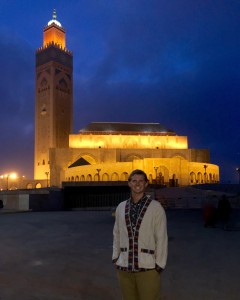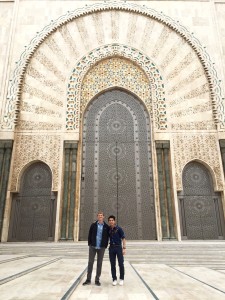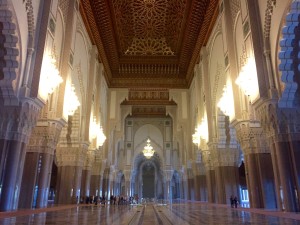Throwback Thursday – Hassan II Mosque
Two weeks ago, I traveled from Marrakech, Morocco to Casablanca in order to see the massive Hassan II Mosque. The Hassan II Mosque in Casablanca was completed in 1993 after great expense and artistic labor, and the result is one of the largest and most beautiful mosques in the world. Its gleaming newness and tremendous wealth is a stark contrast against the rest of Casablanca.
The great Hassan II Mosque was commissioned by its namesake, King Hassan II, in part to provide Casablanca with a single landmark monument. Designed by French architect Michel Pinseau, construction of the Hassan II Mosque began in July 1986 on land reclaimed (without compensation to the former residents) from a run-down area near the sea. The goal for completion of the mosque was King Hassan II’s 60th birthday in 1989, but it ended up not being finished until August 30, 1993.
The project is estimated to have cost as much as $800 million, funds that were remarkably raised entirely from public subscription. International reports have suggested both local resentment and less-than-voluntary donations to the project, but Moroccans seem to be genuinely proud of their monument. The massive fundraising also had a positive side-effect: it temporarily reduced Morocco’s money supply and brought down inflation.
Nearly all the materials of the Hassan II Mosque are from Morocco, with the sole exceptions of the imported white granite columns and glass chandeliers (from Murano, near Venice). The marble is from Agandir, the cedar wood is from the Middle Atlas and the granite comes from Tafraoute.
Over 6,000 Moroccan master craftsmen and artisans were employed to work these local materials into the intricate decorations that embellish the entire structure. When construction passed its deadline in the early 1990s, 1,400 men worked by day and 1,000 worked by night to bring the vast project to completion.




